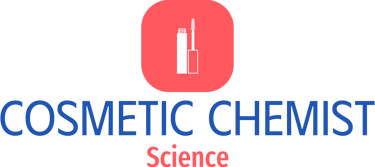The Art and Science of Formulating Lip Balm and Lip Gloss: Insights from Cosmetic Chemists
The Art and Science of Formulating Lip Balm and Lip Gloss: Insights from Cosmetic Chemists
Cuross Bakhtiar at https://cosmeticchemist.co.uk/
8/23/20247 min read


```html
Introduction to Cosmetic Chemistry
Cosmetic chemistry is an interdisciplinary field, blending elements of art, science, and technology to create and enhance beauty products. This area of study involves understanding various chemical formulations and how they interact with the skin and other bodily elements, ensuring that products not only meet aesthetic and sensory expectations but also adhere to safety and regulatory standards. Cosmetic chemists play a crucial role in the development of a wide range of products, from skin care lotions to decorative cosmetics like lip balm and lip gloss.
The journey of a cosmetic chemist begins with extensive knowledge in organic chemistry, biochemistry, and materials science. By leveraging this expertise, they can explore the properties of different ingredients, understand their synergistic effects, and manipulate these outcomes to achieve the desired product performance. This process is as much an art as it is a science, given that sensory attributes such as texture, color, and fragrance are pivotal to consumer satisfaction.
Innovation and technological advancements are pivotal in this field. Cosmetic chemists must stay abreast of emerging ingredients, novel delivery systems, and cutting-edge formulation techniques. This ensures that the products not only comply with regulatory frameworks but also meet the ever-evolving consumer preferences and trends. For example, the increasing demand for natural and sustainable ingredients has led chemists to explore plant-based alternatives and eco-friendly packaging.
The meticulous work of cosmetic chemists forms the backbone of the beauty industry, and their expertise is particularly evident in the formulation of lip balms and lip glosses. These products require a delicate balance of moisturizing ingredients, pigments, and other additives to ensure they provide both aesthetic appeal and functional benefits. The chemistry behind these formulations will be explored in greater detail in the subsequent sections, shedding light on the rigorous process of creating lip products that are both effective and appealing to consumers.
```Understanding Lip Balm Formulations
The formulation of lip balm is a delicate balance of multiple core components that work in harmony to keep the lips moisturized, protected, and healed. One of the primary ingredients in lip balm formulations are waxes, which provide structure and a barrier against environmental elements. Beeswax, a common choice, not only lends its rigidity to the product but also has natural moisturizing properties.
Oils are another critical constituent in lip balm formulations. They offer essential fatty acids and vitamins that nourish the lips. Popular oils include jojoba oil, which is known for its similarity to the skin’s natural sebum, and coconut oil, highly regarded for its deep moisturizing properties. These oils work synergistically with waxes to create a balance between firmness and pliability in the lip balm.
Butters, such as shea butter and cocoa butter, are also integral to this mix. Shea butter is particularly abundant in vitamins A and E, offering both soothing and antioxidant benefits. It helps in conditioning the lips, making them soft and supple. Cocoa butter adds an extra dimension of hydration and forms a protective layer that shields the lips from harsh weather.
Active agents, such as Vitamin E, play a vital role in lip balm formulations as well. These agents provide healing properties and form part of the lip care regimen. Vitamin E is an antioxidant that helps repair damaged skin cells and promotes new cell growth. Additionally, it helps to extend the shelf life of the lip balm by preventing the oxidation of other ingredients.
The formulation process of lip balm involves precise steps like mixing, heating, and cooling. Initially, the waxes and butters are melted together to form a uniform blend. Oils and active agents are then added while continuously stirring to ensure a homogenous mixture. Finally, the blend is cooled under controlled conditions, allowing it to set into a solid yet pliable form. Each step is meticulously monitored to guarantee the final product meets the desired quality and efficacy standards.
Crafting the Perfect Lip Gloss
Formulating the ideal lip gloss is both an art and a science, requiring the right mix of ingredients to achieve the desired shine, texture, and color. Central to this process are three primary components: emollients, film-formers, and pigments. Emollients, such as oils and butters, are crucial in imparting the gloss's signature moisturizing properties. Common emollients include jojoba oil, castor oil, and shea butter, which not only hydrate the lips but also ensure a smooth application by providing the necessary slip and glide.
Film-formers play an essential role in the longevity and brilliance of lip gloss. Ingredients such as polybutene and acrylates copolymer are typical film-formers used in lip gloss formulations. These substances create a flexible, smooth layer on the lips, sealing in moisture and enhancing durability. They are vital in maintaining the gloss's structure, preventing it from feathering or bleeding throughout wear.
Pigments and colorants are the aesthetic heart of lip gloss. They range from organic and inorganic pigments to pearlescent effects, contributing to the vibrance and visual appeal of the product. Titanium dioxide and iron oxides are commonly used pigments that provide various shades and opacities, while mica and bismuth oxychloride deliver a shimmering or iridescent finish. These ingredients can be seamlessly blended to create a spectrum of colors that cater to diverse consumer preferences.
Achieving a balance between aesthetics and functionality in lip gloss formulation is imperative. An effective lip gloss is not only visually appealing but also provides hydration and comfort, leaving lips feeling nourished rather than sticky or heavy. The expert combination of emollients, film-formers, and pigments ensures that the end product glides effortlessly, sparkles brilliantly, and keeps lips moisturized. Cosmetic chemists continuously innovate within these parameters, striving to perfect the harmony between beauty and functionality, ultimately delivering a product that elevates the user's experience.
Challenges and Solutions in Formulating Lip Products
Formulating lip balms and lip glosses presents unique challenges that require a precise balance of artistic and scientific expertise. One of the primary challenges is achieving the right texture. The formulation must be smooth enough to glide effortlessly upon application yet firm enough to hold its shape in the container. Cosmetic chemists often address this by carefully selecting a blend of waxes, oils, and butters. For instance, beeswax provides a stabilizing structure while oils like coconut and jojoba offer emolliency and conditioning properties.
Another critical issue is product stability. Lip products must maintain their consistency and efficacy over time, which demands careful consideration of ingredient interactions and reactions. Stabilizers and emulsifiers play a crucial role here. Emulsifiers help blend water and oil-based ingredients, ensuring a homogeneous product. Natural or synthetic stabilizers can prevent separation and graininess, common problems in lip product formulations.
Shelf life is another pivotal aspect that formulators must address. Preservatives are essential to inhibit microbial growth, especially in products exposed to environmental contaminants. Cosmetic chemists often utilize a combination of natural preservatives like vitamin E and synthetic options such as parabens to enhance shelf life without compromising safety or efficacy.
Formulating lip glosses and lip balms also involves rigorous testing and adjustments. This trial-and-error process allows for the fine-tuning of ingredients and their proportions. Formulators conduct various tests for aspects like melting point, spreadability, and skin feel to ensure the final product meets consumer expectations. These meticulous adjustments underscore the complex nature of cosmetic formulation, revealing that creating a seemingly simple product like lip balm or lip gloss demands intricate scientific knowledge and practical ingenuity.
In conclusion, the formulation of lip products hinges on overcoming challenges related to texture, stability, and longevity. By leveraging a blend of appropriate emulsifiers, preservatives, and stabilizers, cosmetic chemists can create high-quality lip products that offer both aesthetic appeal and functional benefits.
```htmlInnovations and Trends in Lip Product Formulation
In recent years, the lip care industry has witnessed significant innovations and trends that are influencing the way cosmetic chemists formulate lip balm and lip gloss. One of the most notable trends is the rise in demand for natural and organic ingredients. Consumers are increasingly seeking products that are free from synthetic chemicals, artificial fragrances, and parabens. As a result, the incorporation of natural extracts, oils, and waxes has become a priority. Ingredients such as shea butter, coconut oil, and beeswax not only offer moisturizing benefits but also align with consumers' preferences for clean beauty.
Sustainability has also become a crucial factor in lip product formulation. Cosmetic chemists are now focused on developing eco-friendly packaging solutions to reduce environmental impact. This includes the use of biodegradable materials, recyclable containers, and minimalistic packaging designs. These efforts are aimed at minimizing waste and promoting a circular economy within the beauty industry.
Multifunctional products are another emerging trend, with consumers seeking lip care items that offer more than one benefit. For instance, lip balms and glosses that provide moisturizing properties along with sun protection or anti-aging benefits are gaining popularity. This necessitates the inclusion of ingredients such as SPF agents and antioxidants, which can cater to these additional needs.
The advancement of technology has also paved the way for innovative ingredients and sophisticated formulations. For example, peptides and hyaluronic acid are being integrated into lip products to enhance their efficacy. Peptides can stimulate collagen production, while hyaluronic acid can provide intense hydration, resulting in plumper and smoother lips. Nanoemulsion technology is another breakthrough, improving the delivery and absorption of active ingredients, thus boosting the performance of lip care products.
Overall, the continuous evolution of lip product formulation is driven by both consumer demands and regulatory requirements. Cosmetic chemists are leveraging cutting-edge ingredients and technologies to create products that are not only effective but also align with current trends. This dynamic landscape ensures that the lip care industry remains innovative and responsive to market needs.
```Conclusion and Future Directions
The art and science of formulating lip balm and lip gloss are intricate processes that blend creativity and technical knowledge. Cosmetic chemists play a pivotal role in this endeavor, meticulously choosing ingredients and refining formulations to deliver products that provide both aesthetic appeal and functional benefits. Throughout this blog post, we have delved into the various aspects of lip product formulation, from the selection of emollients and humectants to the incorporation of pigments and flavorings. Each step in the process underscores the essential contribution of cosmetic scientists to the beauty industry.
Reflecting on the significance of cosmetic chemists, it becomes evident that their expertise ensures the safety, efficacy, and sensory pleasure of lip balms and glosses. Their continuous innovation drives the development of new textures, long-lasting wear, and enhanced nourishment, catering to diverse consumer needs and preferences. The formulation landscape is ever-evolving, as scientific advancements and consumer trends intersect to inspire novel ingredients and technologies.
Looking ahead, the future directions of lip balm and lip gloss formulations promise exciting potential. With growing consumer interest in sustainable beauty, eco-friendly ingredients and packaging will likely become more prevalent. Advances in biotechnology may lead to breakthrough ingredients that offer superior hydration and protection. Additionally, the trend toward personalized beauty could see bespoke lip products tailored to individual requirements, leveraging data-driven insights and customization technologies.
As we acknowledge the scientific expertise behind our beloved lip products, it behooves us to stay curious and informed about the world of cosmetic chemistry. Understanding the rigorous work and innovation that go into our daily beauty staples enriches our appreciation and empowers us to make informed choices. Future advancements will undoubtedly continue to enhance the functionality and appeal of lip products, ensuring that the beauty industry remains dynamic and responsive to the evolving demands of consumers.
CONTACTS
+44 207 632 7557
Contact@CosmeticChemist.co.uk


ADDRESS: Cosmetc Chemist UK
C/O Harley Street Cosmetic Ltd
85 Great Portland St, London W1W 7LT, England
